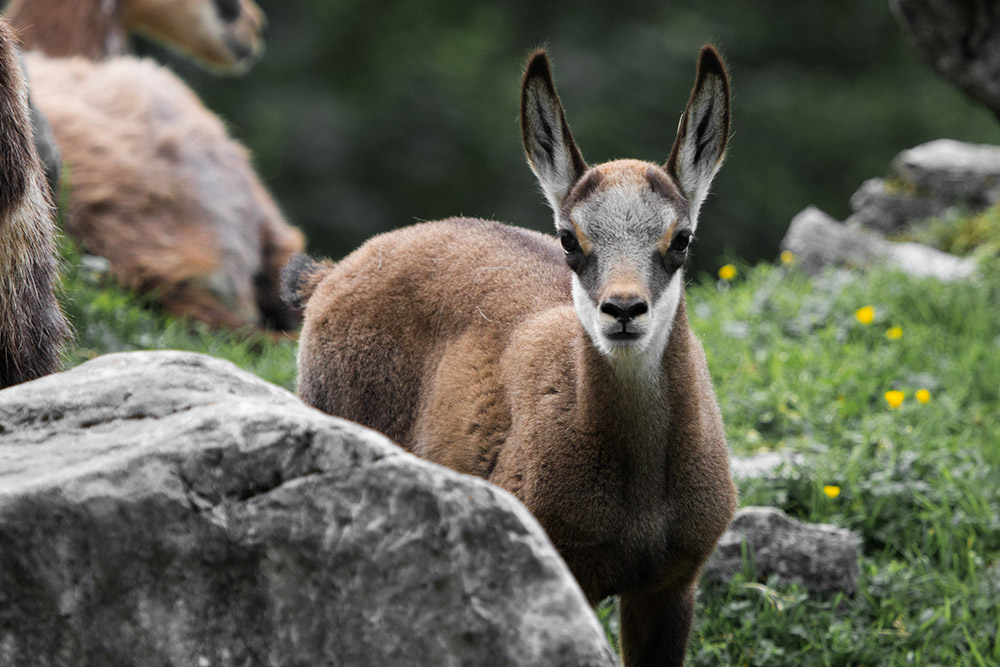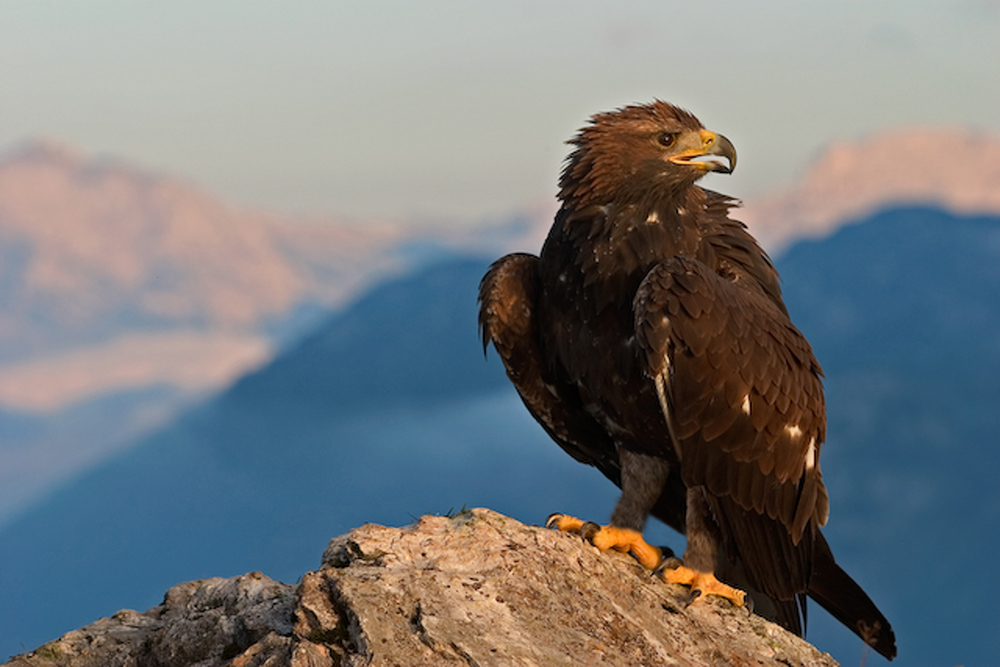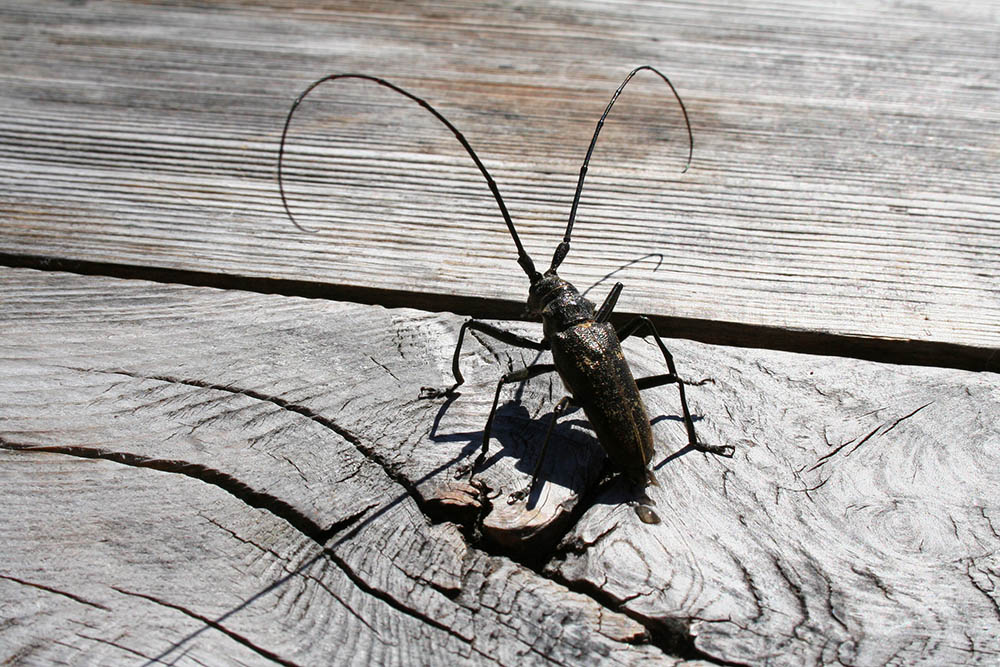Fauna
The pronounced altitudinal gradient in the Berchtesgaden National Park is the basis for a very diverse montane to alpine fauna.

Chamois
Chamois, roe deer and red deer are the large herbivores of the National Park. In addition, the ibex is another characteristic species of the protected area. On alpine pastures and in the high altitudes the alpine marmot is regularly encountered. The predators among the mammals are represented by fox, badger, ermine, otter, stone and pine marten. Bear, wolf and lynx have not yet returned permanently to the Berchtesgaden Alps after their extinction in the 19th century, but migrating individuals can be expected at any time. During the vegetation period, bats colonize the habitats of the National Park up to high altitudes. Species recorded so far in the national park include specialties such as lesser horseshoe bat and ciliated bat, as well as pug bat, greater mouse-eared bat and northern bat.

Golden eagle
Among birds, the golden eagle is a characteristic species of the Berchtesgaden National Park; four pairs regularly breed in the protected area. Since 2021, young bearded vultures have been released annually in the Klausbach Valley - as part of an international project to reintroduce the large carrion and bone-eater to the Alps. The small pygmy flycatcher is at home in closed, richly structured and beech-rich stands of the mixed mountain forest stage. As a bark beetle specialist, the Three-toed Woodpecker reaches high population sizes in the National Park. Species such as the wryneck and gray woodpecker, which colonize sparse, deadwood-rich forests, also benefit from natural disturbance areas in the. The white-backed woodpecker is found in stands rich in deadwood and hardwoods. The black woodpecker colonizes forests up to high montane levels and is important by creating cavities used by other species such as great horned owls and pygmy owls. The largest owl species in the natural area, the eagle owl, also lives in the national park.
Capercaillie and hazel grouse also benefit from the high structural richness in the forests of the National Park. In the area of the upper timberline in the mountain pine fields and alpine grasslands as well as on alpine pastures, the black grouse is regularly found. The ring ouzel also nests here. The Common Redpoll is typical of higher, sparse larch stands. Mountain Pipit breeds on the alpine grasslands and the Alpine Accentor breeds in rocky areas. Typical species of the rocky regions are the rock ptarmigan, snow sparrow and wallcreeper.
The herpetofauna includes alpine and fire salamander, mountain newt, mountain and sand lizard, smooth snake and adder. In streams, there are occurrences of the bullhead and in Königssee, there are whitefish, Arctic char and lake trout.

Longhorn Beetle
The arthropod fauna of the national park is extremely species-rich. The indicator species for structurally rich forest stands with primeval forest character are the so-called primeval forest beetle species, beetle species that live in deadwood and have very high habitat requirements. Among this group, Reiter's bark beetle (Synchita separanda), bark beetle (Ceruchus chrysomelinus) and shovel beetle (Prostomis mandibularis), as well as the FFH species Scarlet beetle (Cucujus cinnaberinus) and Alpine longhorn beetle (Rosalia alpina) have been recorded in the National Park.
The alpine habitats harbor highly specialized ground beetle species or the spider species Mughiphantes variabilis, which is endemic to the Eastern Alps. The alpine grassland communities and alpine pastures, but also the lower lying natural open land habitats, provide a home for typical grasshopper species such as the red-footed snare-grasshopper and the common alpine grasshopper, but also for rare alpine species such as the Siberian club-winged grasshopper. The butterfly fauna includes some very rare species such as the Apollo ) and the black Apollo as well as over 600 species of moths with the extremely rare Augsburg bear.
The invertebrates of the National Park have been studied to varying degrees depending on the taxonomic group. For many groups, targeted surveys regularly lead to a number of new discoveries of species whose occurrence in the National Park was previously unknown. The list of invertebrate species in the National Park is currently being intensively researched and updated.
The species inventory from the Berchtesgaden National Park:
Currently, only a small part of the probably occurring species can be detected. Within the scope of the baseline survey in Biodiversitätsmonitorings is currently working on a first inventory list.